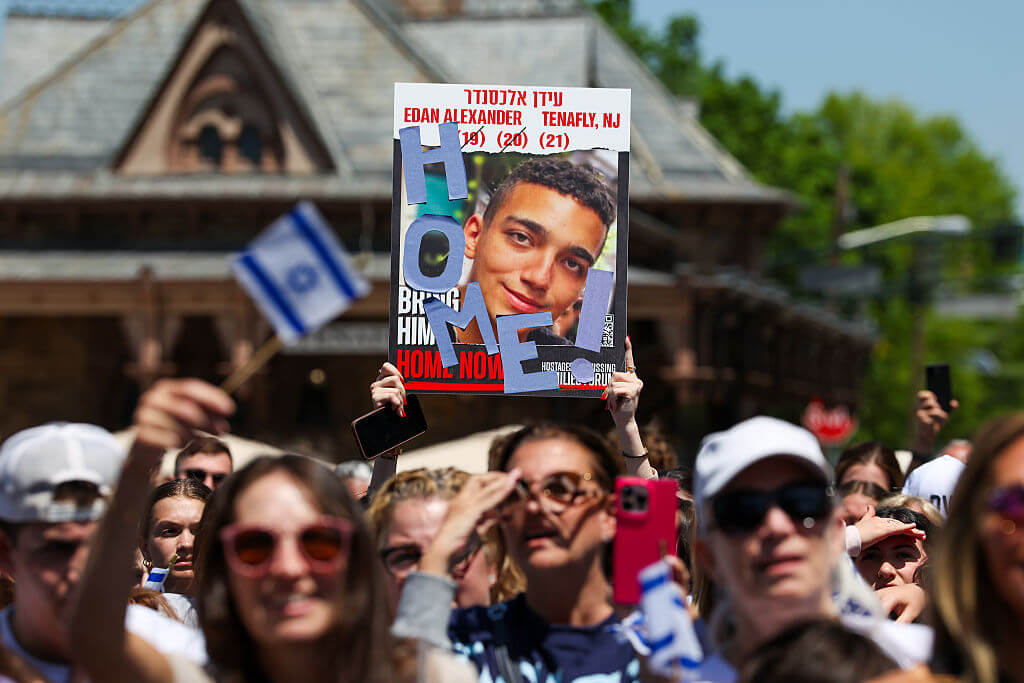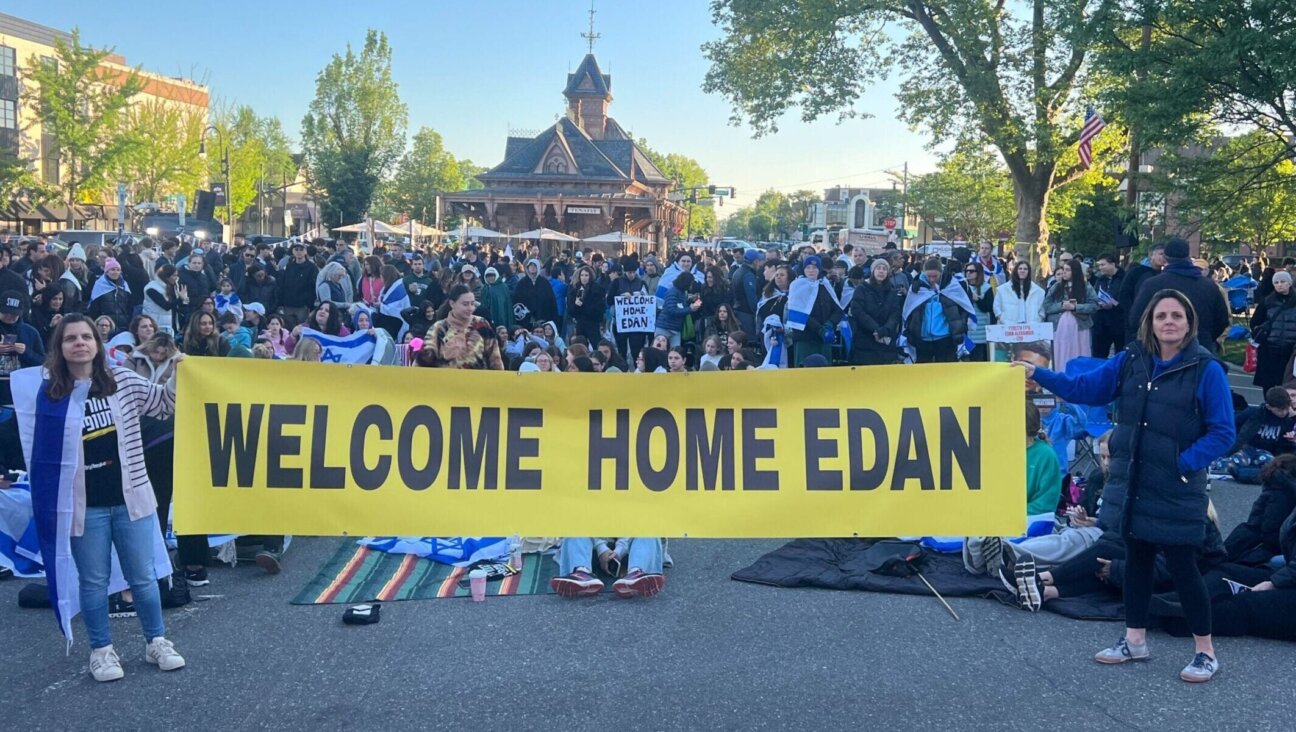Sections of a lost Torah scroll reappear in a German town 83 years after scroll’s disappearance on Kristallnacht

Uwe Mader with the Torah scroll fragments he handed over to the city of Görlitz, Thursday, Dec. 16, 2021. Pawel Sosnowski)
BERLIN (JTA) — A German Protestant minister has handed over segments of a long lost Torah scroll to the city of Görlitz in southeast Germany, 83 years after his father, a town policeman, came into possession of them.
While it is not unheard of for German non-Jews to turn over religious objects that have been lost or hidden since the Nazi period, the Torah scroll fragments took an unusually circuitous journey before coming to light last week.
The Torah had not been seen since Kristallnacht, the pogrom against synagogues and Jewish property in German-speaking lands on Nov. 9 and 10, 1938.
According to Pastor Uwe Mader, 79, the minister who turned the fragments over to the town, the story began with his father, Willi Mader. Born in Görlitz in 1914, Willi was a young police officer in training when he was called to the synagogue on the night of the anti-Jewish pogrom.
Uwe Mader told the Saschsiche Zeitung newspaper that his father never spoke about what happened that night, so it is unclear how the four Torah fragments actually ended up in the policeman’s hands. Uwe Mader believes they must have been cut out by someone who could read the Torah and carefully selected certain passages, including the creation story and the Ten Commandments.
The fragments changed hands several times over the years of Nazi and later Soviet rule.
In the late 1930s, Willi Mader brought the parchments for safekeeping to a friend in Kunnerwitz, Herta Apelt, and her brother. They in turn brought them to their local pastor, Bernhard Schaffranek, who was installed in June 1940. Schaffranek hid the Torah parchments in his library. He died in July 1949. In 1969, his widow, Magdalena, handed them to the new vicar in nearby Reichenbach, Uwe Mader, likely knowing that it was his father who had first received them in 1938.
Magdalena Schaffranek told Uwe Mader to tell no one, and he kept his promise, not even telling his wife. He hid the parchments inside rolls of wallpaper in his office. When he moved to Kunnerwitz in 1977, he took the scrolls with him.
With the political turmoil of 1989 leading to German unification, Mader moved them to a locked steel cabinet, and kept the key with him at all times. It wasn’t until the late 1980s that Willi Mader finally told his son how he’d begun this chain of handovers.
After decades of telling no one, last week Uwe Mader finally decided that the time had come to bring the parchments to light.
The city of Görlitz, which recently completed a refurbishment of the synagogue, said it plans to work with regional Jewish leaders to develop a plan for how to display, or potentially restore, the fragments.
Görlitz’s “New Synagogue,” which dates to 1911, is the only one in the state of Saxony to survive Kristallnacht. It was rededicated as a house of worship and space for interfaith gatherings last summer. There are reportedly some 30 Jews currently living in Görlitz.
Some local Jewish leaders and activists were angered by the announcement that the fragments had been given to the city rather than directly to the representatives of the Jewish community, which would be the legal successor.
But Zsolt Balla, state rabbi of Saxony and Germany’s first post-war Jewish military chaplain, told the Jewish Telegraphic Agency that he was optimistic about plans for the scrolls after speaking with the town’s mayor, Octavian Ursu, Friday.
“We will be discussing strategies next week on how to proceed,” Balla said.
According to the Saschsiche Zeitung, observers were awestruck as city archivist Siegfried Hoche placed the four fragments on a table at the city hall on Thursday.
Ursu said in a statement that he was “grateful to have received such a valuable historical treasure for our council archive” and that the city would “prepare its exhibition for the public in close consultation with Jewish representatives of Saxony.”
The governor of the State of Saxony, Michael Kretschmer, said the fragments were “like a door into the history of Görlitz of the past decades, which is now opening.”
Local Jewish community chair and cantor Alex Jacobowitz viewed the parchments on Friday. He told JTA that some of them appear to be “in relatively good shape, and could be used in a future Sefer Torah, integration of old and new; others are no longer usable, and should either be buried in a genizah or put into a permanent exhibit inside the Görlitzer Synagogue.”
—
The post Sections of a lost Torah scroll reappear in a German town 83 years after scroll’s disappearance on Kristallnacht appeared first on Jewish Telegraphic Agency.
The Forward is free to read, but it isn’t free to produce

I hope you appreciated this article. Before you go, I’d like to ask you to please support the Forward.
Now more than ever, American Jews need independent news they can trust, with reporting driven by truth, not ideology. We serve you, not any ideological agenda.
At a time when other newsrooms are closing or cutting back, the Forward has removed its paywall and invested additional resources to report on the ground from Israel and around the U.S. on the impact of the war, rising antisemitism and polarized discourse.
This is a great time to support independent Jewish journalism you rely on. Make a gift today!
— Rachel Fishman Feddersen, Publisher and CEO
Support our mission to tell the Jewish story fully and fairly.
Most Popular
- 1

Fast Forward Ye debuts ‘Heil Hitler’ music video that includes a sample of a Hitler speech
- 2

Opinion It looks like Israel totally underestimated Trump
- 3
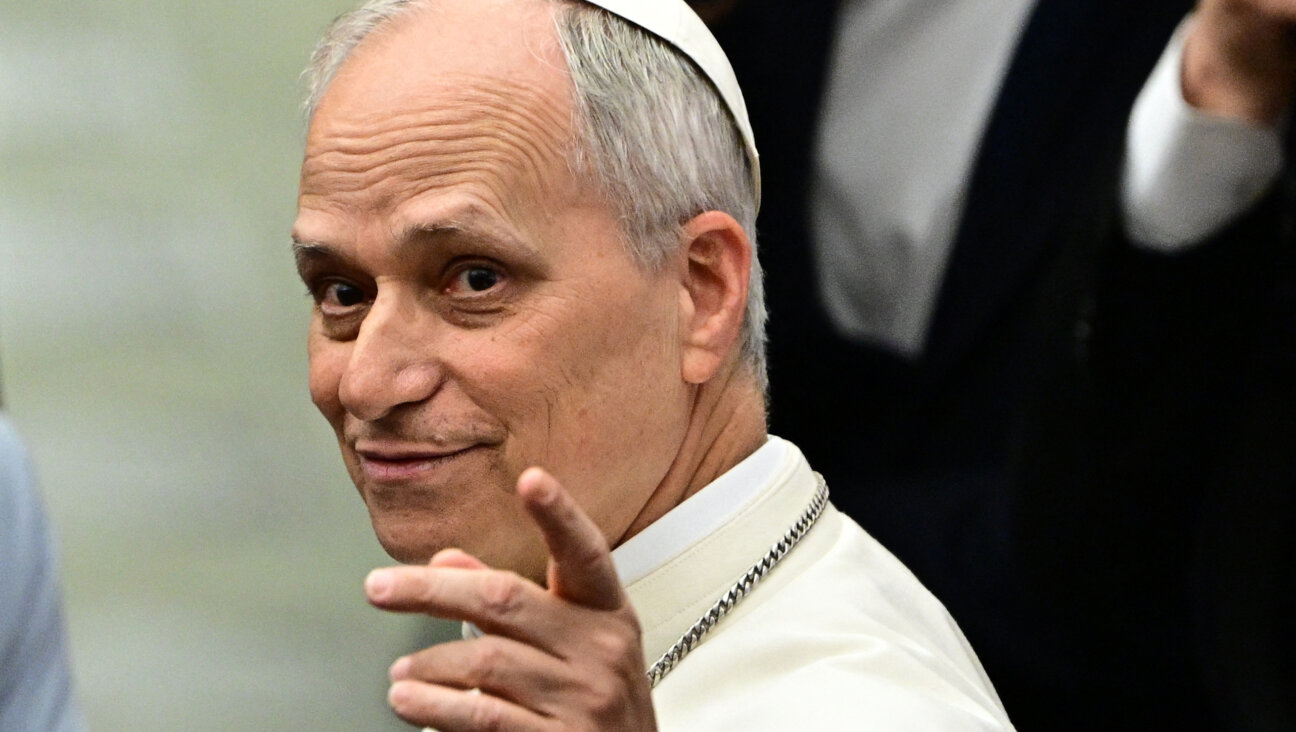
Culture Is Pope Leo Jewish? Ask his distant cousins — like me
- 4

Fast Forward Student suspended for ‘F— the Jews’ video defends himself on antisemitic podcast
In Case You Missed It
-

News In Edan Alexander’s hometown in New Jersey, months of fear and anguish give way to joy and relief
-

Fast Forward What’s next for suspended student who posted ‘F— the Jews’ video? An alt-right media tour
-
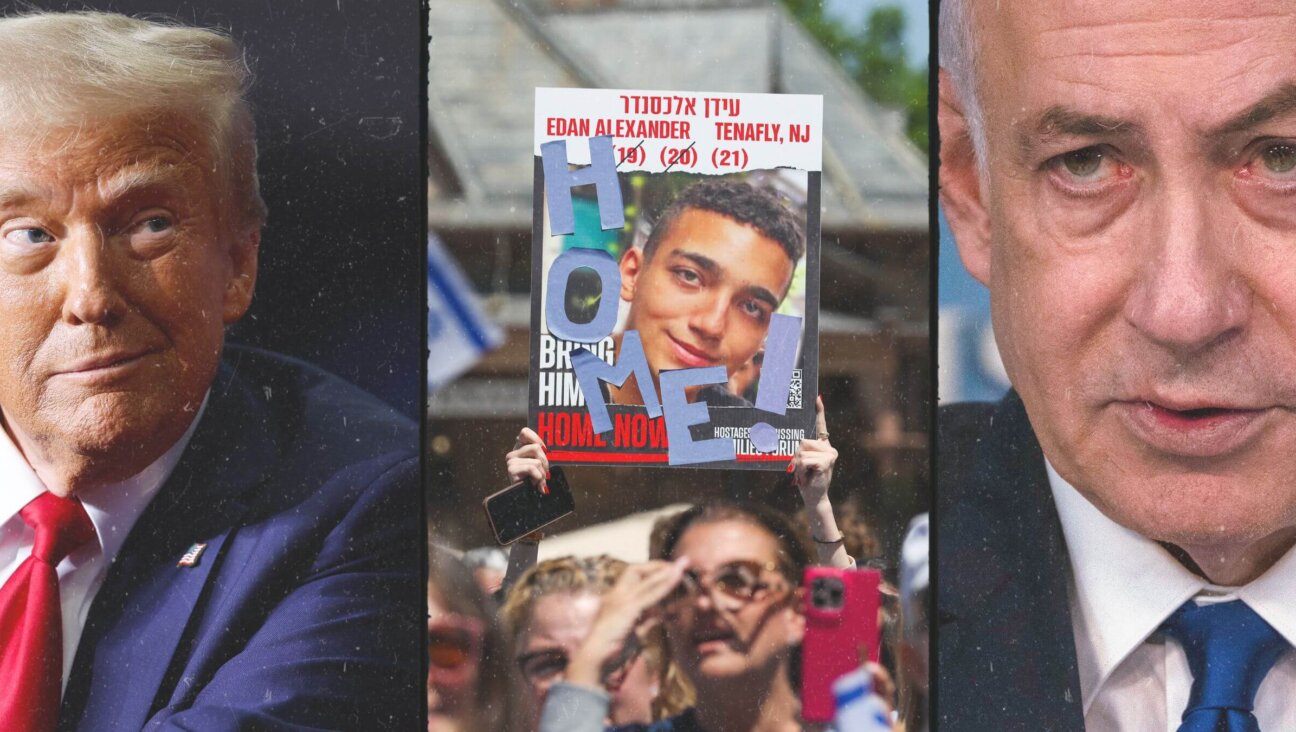
Opinion Despite Netanyahu, Edan Alexander is finally free
-
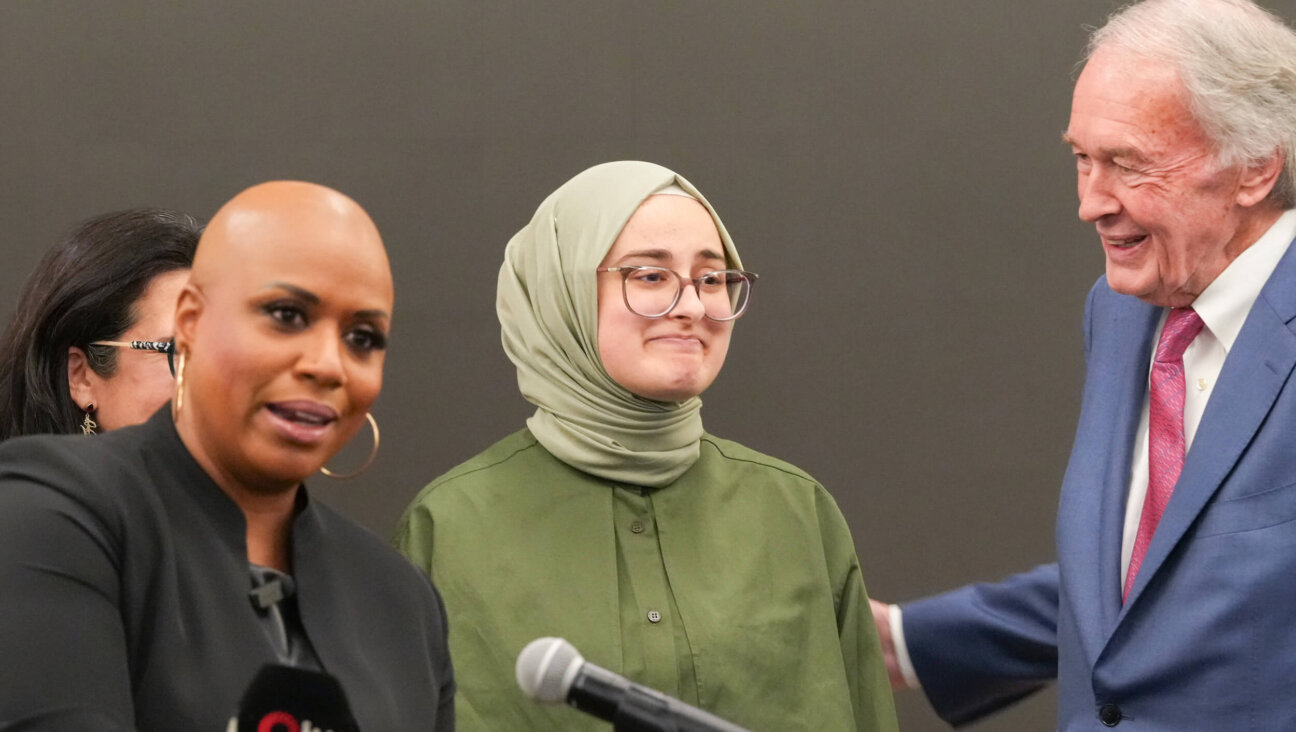
Opinion A judge just released another pro-Palestinian activist. Here’s why that’s good for the Jews
-
Shop the Forward Store
100% of profits support our journalism
Republish This Story
Please read before republishing
We’re happy to make this story available to republish for free, unless it originated with JTA, Haaretz or another publication (as indicated on the article) and as long as you follow our guidelines.
You must comply with the following:
- Credit the Forward
- Retain our pixel
- Preserve our canonical link in Google search
- Add a noindex tag in Google search
See our full guidelines for more information, and this guide for detail about canonical URLs.
To republish, copy the HTML by clicking on the yellow button to the right; it includes our tracking pixel, all paragraph styles and hyperlinks, the author byline and credit to the Forward. It does not include images; to avoid copyright violations, you must add them manually, following our guidelines. Please email us at [email protected], subject line “republish,” with any questions or to let us know what stories you’re picking up.







